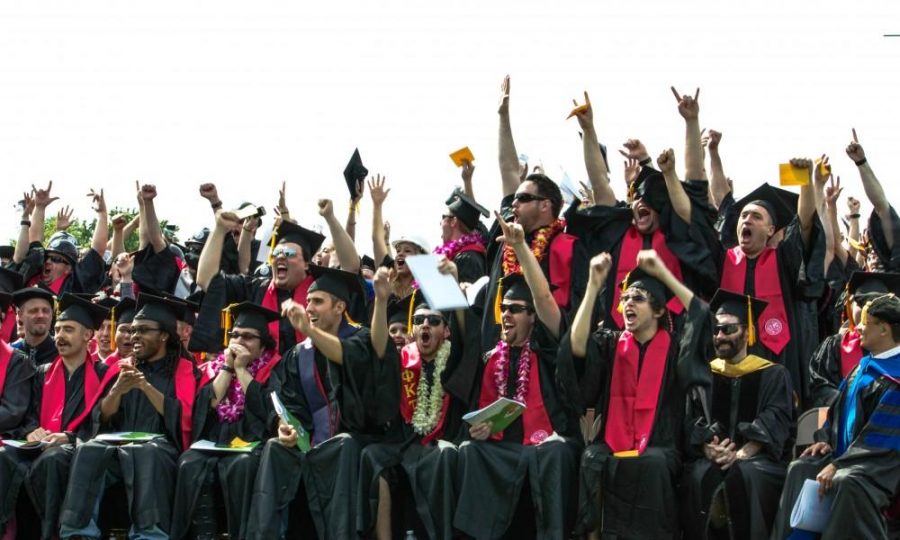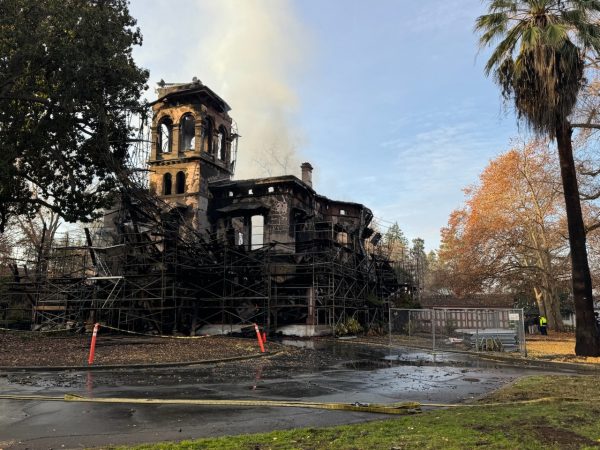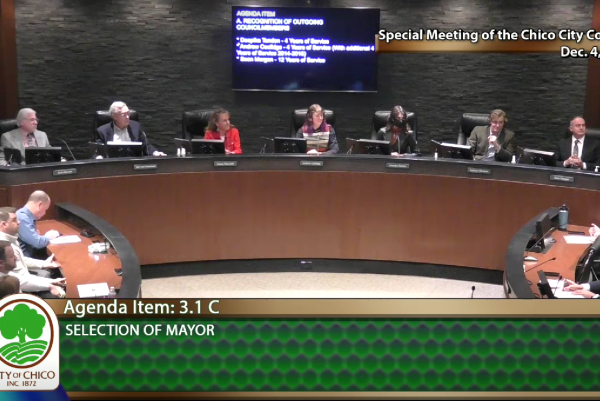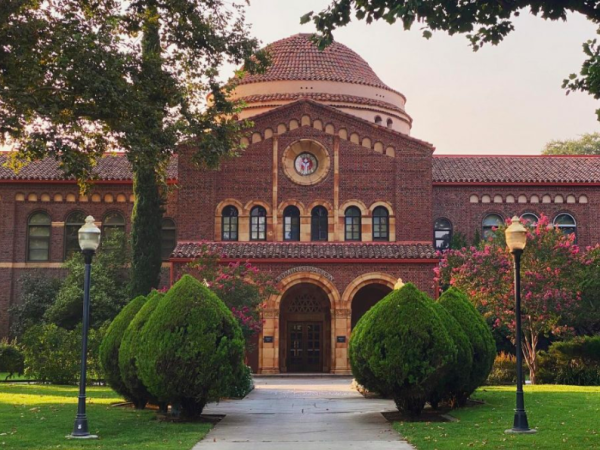State pushing for faster graduation rates
Chico State engineer students cannot contain their excitement to receive their diplomas at spring 2014 graduation ceremony. Photo credit: Chelsea Jeffers
Super-seniors are in danger of extinction.
The CSU system is focusing on how to impact students on track to graduate in four and a half years for first-years and in two and a half years for upper division transfer students, according to a memo from the CSU Chancellor’s office.
The graduation initiative to raise graduation rates has been an effort across the CSU system since 2009. There was a renewed effort in 2014 to reset new goals for the year 2025. Chico State has been working on the initiative for the last two years.
In spring 2016, budget discussions between the governor and the state legislature about first-year and transfer graduation rates led to a $35 million incentive for CSU campuses with one-time graduation initiative efforts for the 2016-17 budget year.
Barbara Fortin, associate vice president of enrollment management, said the new graduation initiative plan was put together in a short time frame and over the summer when a lot of people were not on campus yet.
Dr. Bill Loker, the dean of undergraduate education, was the leader of the plan with consultation from the graduation initiative team.
“The CSU has to present a plan that is accepted by the department of finance and the governor,” Fortin said.
She said Chico State was told in early August about the money available for campuses with a short-term plan for 2016-17 and a long-term plan for 2025 to increase graduation rates. She said the university was given until Sept. 2 to tell the CSU system that they would be submitting a full plan with an estimation on how approximately $1.3 million would be used.
“Regarding the $1.3 million, that again it’s not 100 percent that this money is going to be appropriated but we are expecting it, we expect that we will receive word on that relatively shortly,” she said. “We actually received word of the $1.3 million allocations that could potentially come to Chico State when we were at the midpoint of developing the plan, around Aug. 25.”
In the body of the plan, the graduation initiative team identified how they were considering spending the one-time resource from the government. Possible expenditures include approximately:
- $150,000 will be used for two more U-Courses for mentor-supported programs for underrepresented minorities, first-year students and first generation students. It will also be used to intensify outreach efforts to men of color.
- $275,000 will be used to offer more sections for 1,000 spring 2017 transfer students.
- $10,000 will be used for advising and orientation.
- $90,000 will be used for six other Supplemental Instruction STEM courses.
- $775,000 will be used to hire temporary academic advising, data programming and analysis staff.
It will also be used to add extra spring 2017 class sections, one discounted winter intersession course and graduation application fee for 550 students on track to graduate in May 2017.
Interim Provost Mike Ward, a member of the graduation initiative team, said “The registrar has identified that there are 400 students that started out as a first-time freshman and 300 students that are two-year transfers that will potentially graduate in four and a half and two and a half years. If we can reach these students, we can have a huge impact on our four-year rates.”
Fortin said data from degree progress reports and the smart planner were used to find and offer opportunities for students. Opportunities include additional courses and other incentives to ensure a timely graduation in May 2017.
“We identified 805 students and we are planning how we can step up to assist those students and how we can provide additional spring 2017 course sections to assist those students,” Fortin said. “We talked about ways we could incentivize them to take winter session courses and we also talked about perhaps paying their graduation application fee as an incentive for them.”
Removing unintentionally placed curricular barriers is one-way faculty can help increase graduation rates, Ward said.
“One of the things that I will be asking the department chairs is work with all the faculty to really take a closer look at your curriculum,” he said.
Many Academic Senate members said the graduation initiative plan was improbable for some students working jobs.
Senate member Joe Crotts said the low graduation rate is due to students being less prepared for university level work and having to take remedial classes.
“We are kind of caught between two ends of the spectrum,” Crotts said. “On one end we are supposed to get people out in a timely manner and on the other end we are accepting more students who are less qualified, less prepared.”
The focus on four-year graduation rates is mainly because of pressure from Governor Brown and the legislature, Ward said.
“Why the focus on the four-year rates? Because that’s what the governor and the legislature are focused on,” he said. “We’ve focused on six-year rates at the CSU for a long time for lots of reasons that make more sense educationally, however, if you want to get any additional money to the CSU, it’s going to be distributed by student success and they define success as shorter graduation.”
Bianca Quilantan can be reached at [email protected] or @theorion_news on Twitter.








